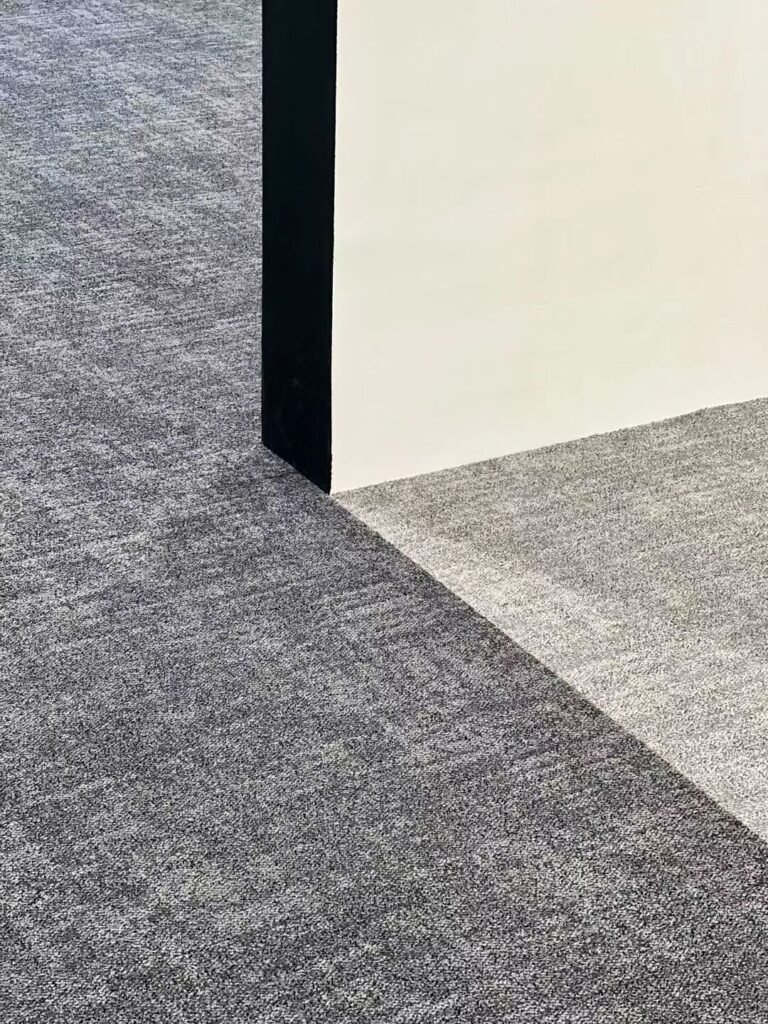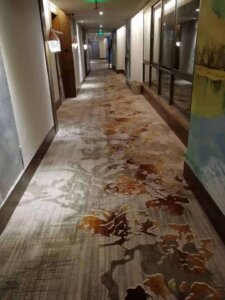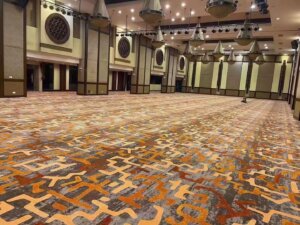1. Basics of Carpet Tiles:

Carpet Tiles are commonly used in office spaces. The first 50x50cm carpet tiles appeared in the Netherlands in 1957. In 1960, American companies LEES and Armstrong started developing “adhesive” Carpet Tiles. Subsequently, Interface and European company Hega began producing “needle-punched” Carpet Tiles, leading to the development of “loop pile” structured Carpet Tiles.
The term “carpet tiles,” also known as “modular carpet,” refers to carpets formed by assembling differently shaped blocks of carpet together. Compared to traditional wall-to-wall carpets, modular carpets are easier to transport and replace, allowing for more flexible color and pattern combinations during installation.
2. Classification and Characteristics of Carpet Tiles:
In terms of material and production process classification:
Based on surface technology: loop pile Carpet Tiles, printed Carpet Tiles, electrostatic flocked Carpet Tiles, PVC woven carpets, needle-punched carpets.
Based on surface material: Nylon (Nylon 6, Nylon 6.6), Polypropylene (PP), Polyester fibers (PET, PTT from corn fiber), natural fibers, blends.
Based on backing technology: coated plastic (PVC), asphalt, PE, composite backing, foam backing, extrusion, adhesive bonding.
Based on backing material: PVC, asphalt, PU, PE, rubber, magnetic, other plastics.
3. Common Carpet Sizes:
50cm * 50cm
50cm * 100cm
100cm * 100cm
25cm * 100cm
60cm * 60cm
60.96cm * 60.96cm (24in * 24in)
91.44cm * 91.44cm (36in * 36in)
18in * 36in (45.72cm * 91.44cm)
12in * 36in (30.48cm * 91.44cm)
Large hexagon (side length 36.3cm)
Small hexagon (side length 25cm)
Trapezoid (cut from a large hexagon)
Triangle (base 50cm, waist 35.4cm)





